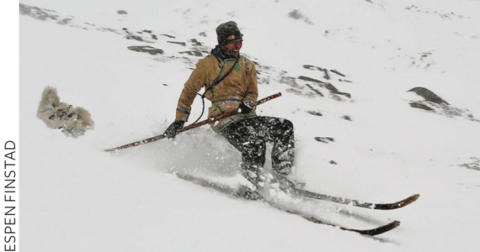
The sport underwent a revolution more than a century ago, when skiers gradually shifted from a single shaft to holding a pair of poles.
By Luzi Hitz with Seth Masia
At a military cross country race in Chamonix, in 1908, the French and Italian squads showed up each with a single long pole, as they’d been taught by their Norwegian instructors. But the Scandinavians pulled a fast one: All their racers pushed off with two poles and sprinted away in a modern diagonal stride. The northern platoons took the first eight places out of 30 finishers. A couple of the locals were so disgusted at being passed that they threw away their “grands batons” and raced pole-free, finishing ninth and 13th. It marked the end of the single-pole era, at least for ski competition.
Double-poling was not new. Right from the beginning, hunters on skis used a spear for balance and propulsion. But if need arose, a hunter could use his bow as a second pole. Dating from 5,000 years ago, rock art in northernmost Karelia (Russia) shows ski tracks with pole plants on either side. Saami (Laplander) reindeer herders traditionally used two poles (see the Moses Pitt woodcut from 1680, and a better-known drawing in Per Högström’s 1747 description of the Saami.)...
